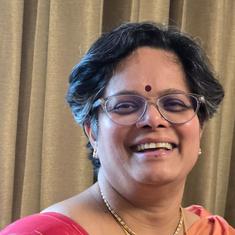This author entered the sleepy little gate of JNU in the evening on 13 July 1989. Little did he realise then that the citizens of France were celebrating 200 years of their revolution which brought to us the ideas of equality, liberty and fraternity. Neither did he know then that JNU too was entering the twentieth year of its foundation.
It was a fortuitous coincidence. The idea of freedom, a sustaining force for many of the intellectual battles on the JNU campus over the last twenty years, was sweeping over Europe. That continent was also the place which sustained the principles of equality and liberty in its diverse forms including the one which the communists in India espoused. Therefore, to one who was trained by the pre-war Europeans, the wave indicated larger things. But to a young mind the romance of the campus was more seductive than thinking about those changes happening thousands of miles away.
As a young student in the 1980s, reading one of the staple middle-class daily newspapers, The Statesman, the first and foremost wave of change that one became familiar with was the Solidarity movement in Poland. On 18 January 1989, the Communist Party of Poland voted to legalise the Solidarity.
On 17 April 1989, it was a legalised Solidarity that was allowed to stand for the semi-free election. On 4 June 1989, the victory of Solidarity was established in the Polish elections as the first of many anti-communist revolutions in central and eastern Europe. On 19 August 1989, the Polish president, Wojciech Jaruzelski, the man in dark glasses etched into our memory, nominated Solidarity activist, Tadeusz Mazowiecki, to be the prime minister of Poland—the first non-communist prime minister in forty-two years.
In JNU, the anti-SFI students also began to be mobilised in their attack on the communists on the issue of the Tiananmen Square massacre of students.
While the Aravali summers were making it unbearable for the students in Delhi, thousands of kilometres away, in Beijing, the capital city of the biggest communist country in the world, China, events were unfolding differently for students there.
On 21 April 1989, students from Beijing University gathered to protest at the Tiananmen Square in Beijing, and were soon joined by students from Shanghai, Xian and Nanjing. On 19 May 1989, Zhao Ziyang, the then general secretary of the Communist Party of China, met the students indicating the party’s relationship with the students.
Beijing University had always had a very powerful presence which was not only displayed but also legitimised in the Chinese society. However, the day after Ziyang’s meeting with the students, the party imposed martial law in Beijing. The students did not relent even after the imposition of the martial law – perhaps they were given a signal from within the party to continue their agitation.
The internal mechanism of the Communist Party, however, was rapidly changing. The students displayed their core ideology when they erected a 10-metre statue of the goddess of Democracy on 30 May 1989. The Chinese communist party now came back into its own to counter the ideological rebellion, and crushed the rebellion with force. Four days later, on 4 June 1989, the tanks of the People’s Liberation Army rolled out into the square and massacred the student demonstrators.
In the JNU campus, Sitaram Yechury (whose election slogan in 1977 was ‘Achchha Kam, Achchha Nam, Sita Ram, Sita Ram’), a leading communist leader and a product of the student movement in JNU, openly targeted the bourgeois press, both American and Indian, for spreading baseless rumours to destabilise the Chinese system.
It seemed pathetic and paradoxical for anyone familiar with the world events, particularly the CPI(M)-affiliated teachers, who abided by the democratic movement purely for the sake of their students, to find their communist beliefs shaken by the massacre of students in communist China.
The non-SFI and non-AISF left radical sections were delighted with this turn of events, although they were far more bellicose when it came to defending their political and intellectual positions. There were now strong opinions rampant amongst the students against the communist edifice which seemed to be based on complete lies.
The regrouping began as soon as the campus reopened. JNU was one of the few institutions that had vehemently opposed the communalising movement of the BJP through its Rath Yatra. So the RSS was more active in the campus now. The mood of the politics in the country began to change with the Congress ousted from the government, charged with corruption. Politics now seemed to be full of possibilities and by the time the university reopened in mid-July, the falsehoods of the communist claims were attacked by the more radical communist groups and supported wholeheartedly by many groups ranging from the extreme right to fringe radicals.
For the fringe radicals every official, teacher or student who did not support their cause was a physical manifestation of the establishment.
From their hibernation, they came back with a bang. The air was full of sound and fury, and by August the movement against the so-called establishment was in full swing. A political formation called Solidarity came into being in October 1989 to take to the field of electoral politics.
To the untutored in the politics of the campus, the fight between the SFI and the rest seemed a simple, black-and-white political fact. The truth, however, was layered in the labyrinth of ideological life of the community. All this meant that one was now in an ideological arena with no hermetic shield.
Excerpted with permission from JNU: The Making of a University, Rakesh Batabyal, HarperCollins India.










